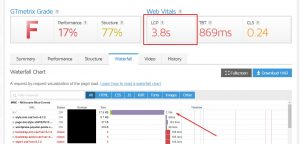If you’ve been wondering how to show up in AI Overviews, or how to prepare your content for a world where AI is assembling answers instead of listing links, then this is the checklist you need.
Last week, Aleyda Solís published what I’d consider the most actionable framework yet for optimizing content for AI-powered search experiences. Not just Google’s AI Overviews, but the entire future of retrieval-augmented generation (RAG), where search engines pull chunks of content, synthesize them, and present their own summaries.
This isn’t a rehash of “just write helpful content.” It’s a real checklist with eight specific areas to focus on if you want your content to be selected, cited, and surfaced by AI systems.
Along with the checklist, she also built a Google Sheet to go along with it that you can use. Link will be at the end of the article.
Here’s a breakdown with some added thoughts of my own:
8 Ways to Optimize for AI Search (with Notes)
1. Structure Content in Chunks
Think modular. Each section of your content should stand on its own, able to be cited independently. This means clear subheadings, focused answers, and no meandering intros.
💡 Example: Instead of one 1,500-word wall of text, break it into 5 subtopics with defined headers and direct takeaways.
2. Lead with the Answer
AI systems prioritize content that’s clear from the first line. Start each section with a direct answer to the question it covers. Then expand or explain below.
💡 This also happens to align perfectly with featured snippet optimization.
3. Be Citation-Worthy
AI Overviews and other systems tend to cite content that’s trustworthy and fact-based. Use data, attribute statements, and include bylines with credentials.
💡 If your content looks like a generic opinion blog, it won’t make the cut.
4. Cover Topics with Breadth and Depth
AI search favors authoritative sources, and topical authority matters more than ever. Build content hubs that cover core topics in full.
💡 A single post on “best CRMs” won’t cut it. You need guides, comparisons, how-tos, and use cases too.
5. Use Multimodal Support (Images, Charts, Videos)
AI models don’t just read, they interpret. Visuals, especially when semantically labeled, improve usability and signal completeness.
💡 But don’t hide visuals behind JS. Make sure they’re indexable in raw HTML.
6. Show Authoritativeness
Use structured data (like author markup), link out to credible sources, and build backlinks to your content. Topical authority helps, but so does perceived legitimacy.
💡 A product review written by “Staff Writer” won’t carry the same weight as one written by an industry expert with citations.
7. Optimize for Personalization and Variants
AI Overviews often change based on region, device, or user history. Address multiple intents and scenarios to improve your chances of matching these variants.
💡 Don’t write only for the generic query. Add context for beginners, pros, and different use cases.
8. Ensure Crawlability and Indexability
Don’t block AI bots or Googlebot from accessing your content or resources. Avoid over-reliance on JavaScript. Use descriptive HTML.
💡 This is still technical SEO 101, but now with even higher stakes.
Why This Matters
AI-powered search is already changing how content is discovered. These systems don’t rely on full-page ranking alone. They select chunks of content, analyze them for clarity and accuracy, and build synthesized responses.
If your content is buried in fluff, poorly structured, or light on credibility, you’re not just missing rankings. You’re missing relevance altogether.
This isn’t optional anymore.
If you want to be surfaced, cited, and trusted in the next era of search, it’s time to optimize for retrieval, comprehension, and credibility.
There is a lot more detail on Aleyda’s checklist, so be sure to visit the page below.
👉 Check out Aleyda’s full checklist here
And consider bookmarking it. You’ll refer back to it more than once.
Also, if you don’t follow Aleyda on LinkedIn, I would recommend you do so, and be sure to check out her SEOFOMO Newsletter.



